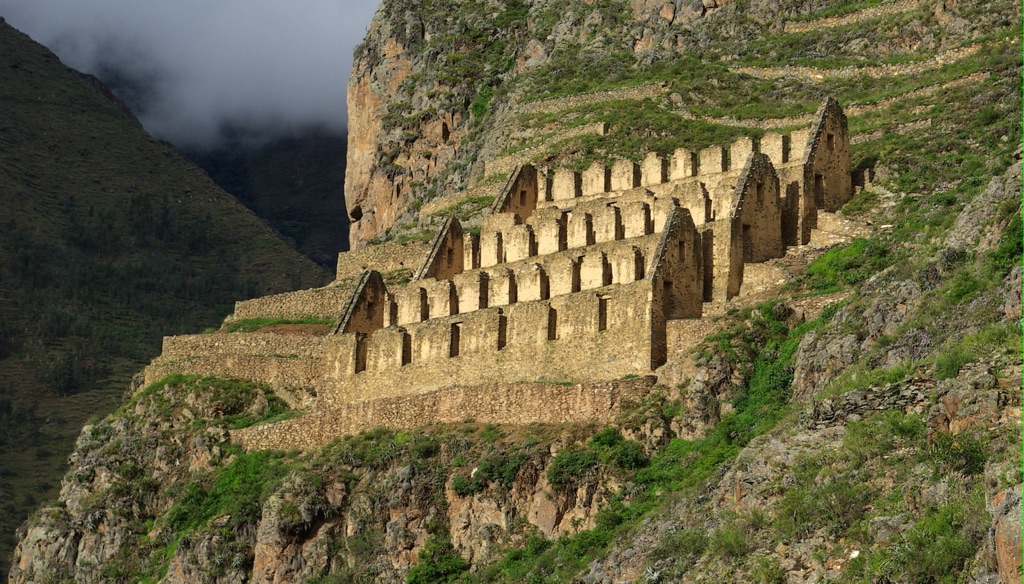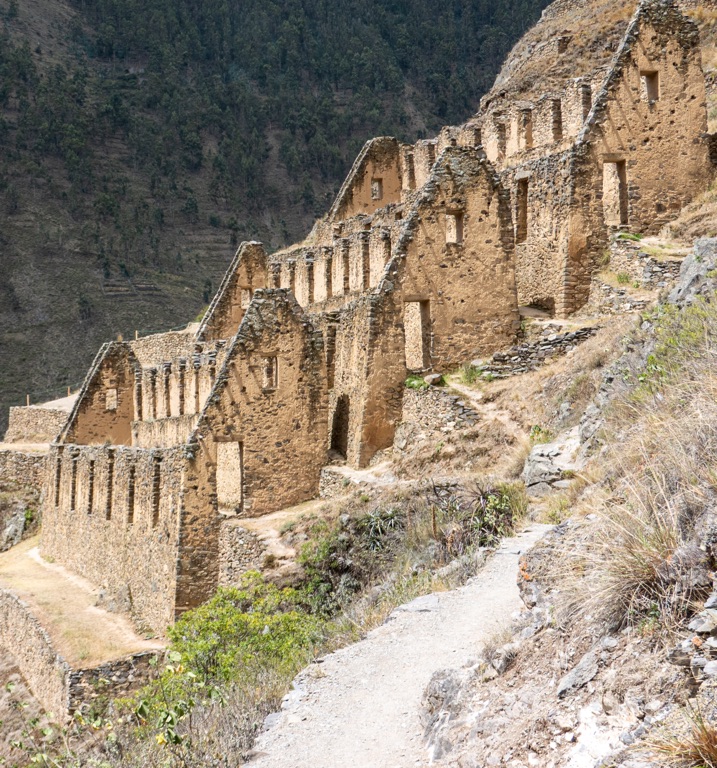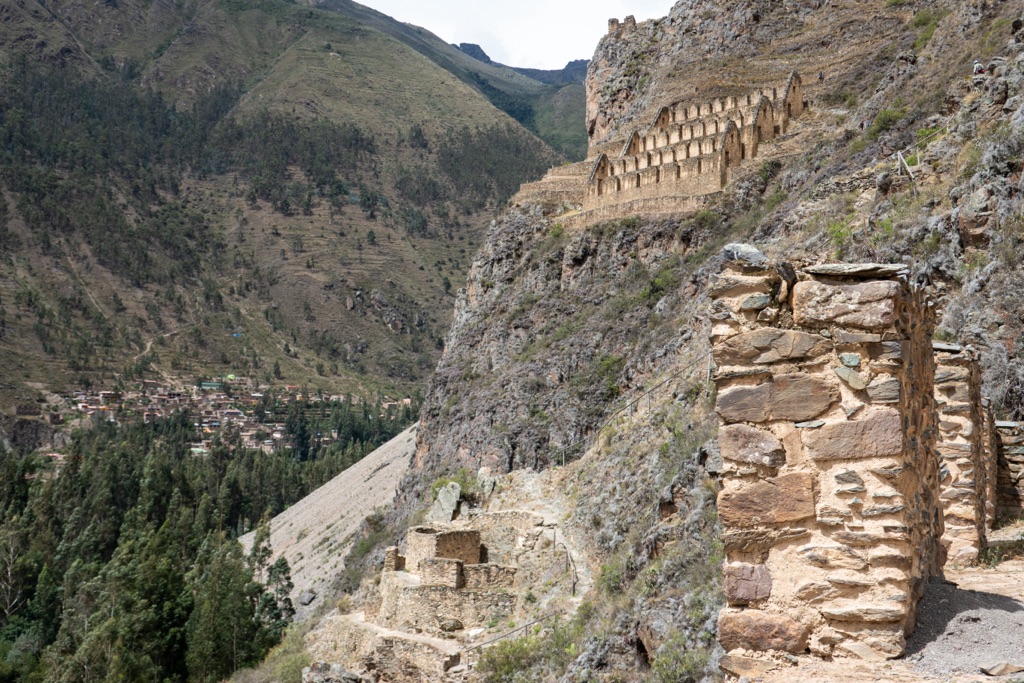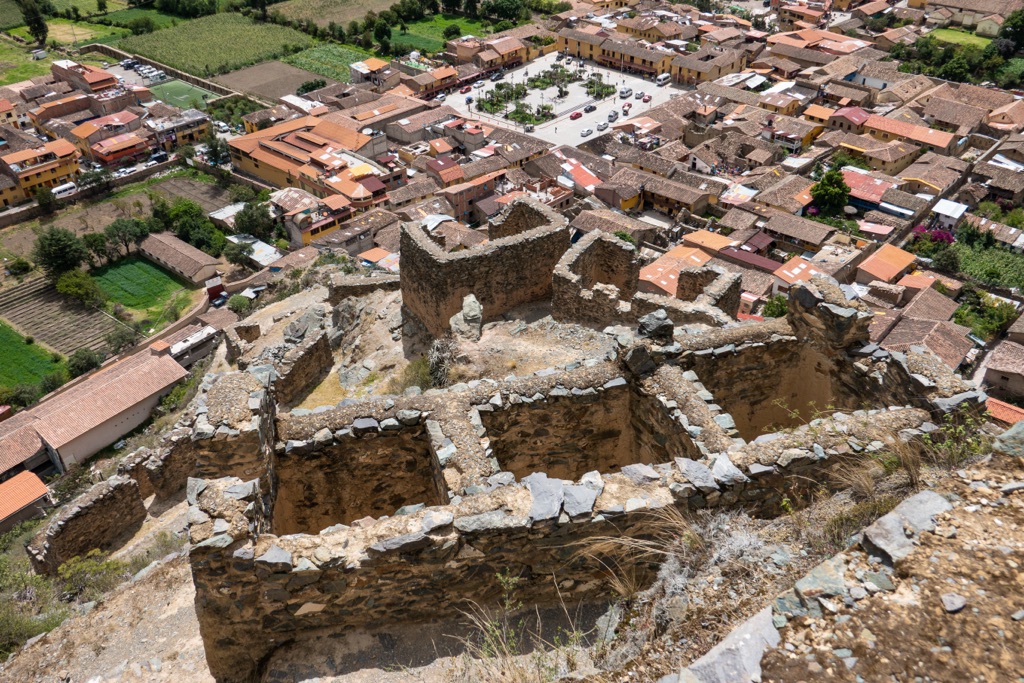Pinkuylluna is an Incan site known for its impressive granaries perched on the hills overlooking Ollantaytambo, an ancient town in the Sacred Valley of Peru. These storehouses were strategically placed to take advantage of the cooler air at higher altitudes, which helped preserve food. The site offers a glimpse into the Incan civilization’s advanced agricultural practices and their ability to adapt to the Andean environment.
Get your dose of History via Email
Historical Background of Pinkuylluna
The discovery of Pinkuylluna is not attributed to a single individual, as it has been part of the local landscape known to inhabitants of the Sacred Valley for centuries. However, its significance was highlighted to the wider world during the exploration of Incan sites in the 20th century. The Incas, a civilization that thrived in the Andean region from the 13th to the 16th century, built Pinkuylluna. They were master builders and planners, evident in the ruins that remain today.

While the exact date of construction is not known, Pinkuylluna dates back to the height of the Incan Empire. It served as a storage complex, crucial for the survival of the local population. The granaries held grains such as maize and quinoa, which were essential to the Incan diet. The site’s strategic location above Ollantaytambo allowed the Incas to utilize the natural environment for food preservation.
After the fall of the Incan Empire, Pinkuylluna fell into disuse. The Spanish conquest led to the abandonment of many Incan structures. Over time, Pinkuylluna became a silent witness to the past, with its ruins standing as a testament to the ingenuity of the Incas. It was not the scene of any known historically significant events post-conquest but remains an important archaeological site for understanding Incan civilization.
Today, Pinkuylluna is accessible to visitors who wish to explore its ruins and enjoy the panoramic views of Ollantaytambo and the Sacred Valley. The site has not been fully excavated, leaving much of its history shrouded in mystery. However, it continues to be an important part of the cultural heritage of Peru and is protected as part of the Ollantaytambo Archaeological Park.
The granaries of Pinkuylluna are a reminder of the Incan Empire’s vast network of storage sites, which were essential for managing the empire’s resources. The site’s preservation allows historians and archaeologists to study the Incas’ advanced agricultural techniques and their ability to sustain a large population in a challenging environment.

About Pinkuylluna
Pinkuylluna’s granaries are a marvel of Incan engineering. They are built into the hillside, with walls constructed from fieldstones and mud mortar. The structures are characterized by their trapezoidal doors and niches, typical of Incan architecture. The granaries’ elevated position not only provided a cooler environment for food storage but also protected the supplies from pests and flooding.
The site consists of several storehouses, each varying in size. The buildings’ design includes ventilation features that allowed for air circulation, crucial for preserving the stored crops. The Incas demonstrated their understanding of the local climate and geography by constructing these granaries at high altitudes where temperatures were lower.
Access to the granaries was achieved through a network of paths and stairs carved into the mountain. The Incas’ ability to integrate their structures with the natural landscape is evident at Pinkuylluna. The paths provided a direct route for transporting goods to and from Ollantaytambo, which was a vital administrative and agricultural center in the Sacred Valley.
Despite the passage of time, the granaries remain largely intact, showcasing the durability of Incan construction techniques. The use of local materials and the builders’ skill in crafting structures that could withstand the Andean weather have contributed to the site’s longevity.
Archaeological studies of Pinkuylluna have provided insights into the Incan way of life, particularly their agricultural practices and food storage methods. The site is an important piece of the puzzle in understanding how the Incas managed their empire’s economy and food supply.

Theories and Interpretations
Several theories exist about the use of Pinkuylluna. The most widely accepted is that it served as a storage facility for agricultural products. The cool air at the higher altitude would have been ideal for preserving perishable goods. This theory is supported by the design of the granaries, which includes features aimed at food preservation.
Some researchers have suggested that Pinkuylluna might have had additional functions. Its prominent position overlooking Ollantaytambo could indicate a ceremonial or surveillance role. However, there is no concrete evidence to support these theories, and they remain speculative.
The mysteries of Pinkuylluna extend to the Incas’ choice of its location. The site’s placement on a steep hillside would have made construction challenging. This has led some to interpret the site as a demonstration of Incan power and their mastery over the environment.
Historical records from the Spanish conquest provide limited information on Pinkuylluna. As a result, much of what is known about the site comes from archaeological interpretation. The Incas did not leave written records, so understanding their sites involves piecing together clues from the structures themselves and oral histories.
Dating Pinkuylluna has been primarily through relative dating methods, such as comparing its construction style to other known Incan sites. Absolute dating methods, like radiocarbon dating, have not been widely applied, leaving some uncertainty about the precise age of the structures.

At a glance
Country: Peru
Civilization: Inca
Age: Approximately 15th century AD
Conclusion and Sources
Reputable sources used in the creation of this article include:
- Wikipedia: https://en.wikipedia.org/wiki/Ollantaytambo
- Wikipedia: https://en.wikipedia.org/wiki/Pinkuylluna

